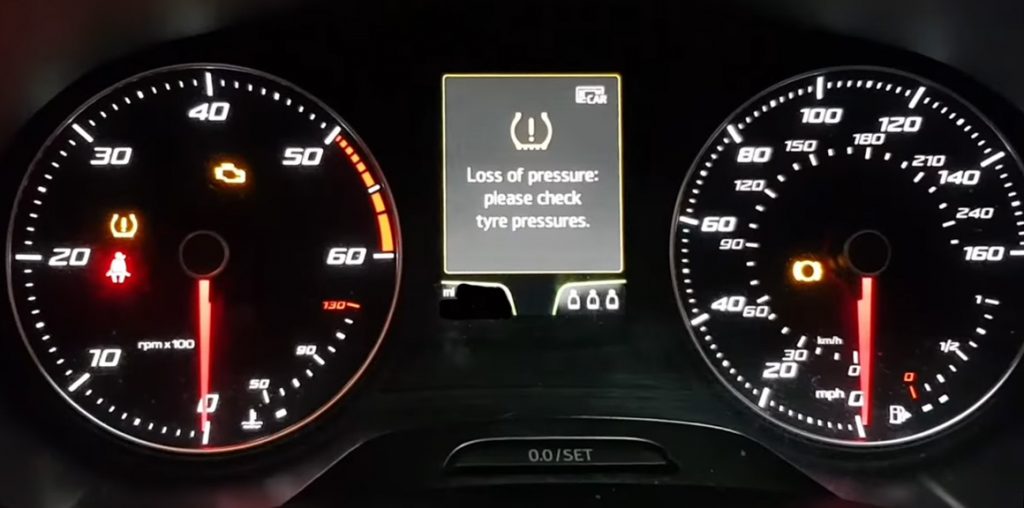The TPMS (Tyre Pressure Monitoring System) is a fantastic bit of kit. In this two-part post, we’ll look at what it is and how to deal with any problems.
What is a tyre pressure monitoring system?
The clue’s in the name! A TPMS continually checks the pressure of a vehicle’s tyres and alerts the driver if there’s a problem. This is usually shown on a dashboard display as a warning light or a graphic. TPMS normally kicks in when the pressure drops 25% below that which is recommended.
There are two types of TPMS. Direct TPMS incorporates pressure-detecting hardware to directly ascertain a tyre’s pressure. By contrast, indirect TPMS doesn’t actually measure the tyre’s pressure. Instead, it calculates this based on other measurements, such as small variations in wheel rotation speeds.
Both types of system send their data to the car’s ECU, ready to be displayed.
Why is TPMS a great idea?
In theory, we’re all checking our tyre pressures regularly. There’s no shortage of information telling us why its important. But theory and practice are two different things, and the reality is that many of us don’t make regular checks. From that standpoint alone TPMS gets round human forgetfulness and apathy.
But even if you check your tyres religiously, your tyre can get damaged on a journey and lose pressure. Continuing to drive on an underinflated tyre is dangerous and risks a catastrophic failure. Again, TPMS tells you immediately that there’s a problem.
There’s little doubt that in the years since it’s been available, TPMS has saved a considerable number of lives. Since underinflation reduces fuel economy and the life of tyres, it’s also been good for drivers’ pockets. For the same reasons, TPMS is kind to the environment, as underinflation adds an estimated 2 million tonnes of CO2 to the atmosphere worldwide.
When did TPMS become a legal requirement?
EU regulations on TPMS came into force on 1 November 2012. These required all new cars sold in any EU country to have TPMS. Two years later, this was extended to cover all new passenger vehicles.
Of course, it’s not much point having a safety system fitted if it’s stopped working, so TPMS was added to the UK MOT test in January 2015. Since then, your car will fail its MOT if your TPMS sensors are inoperable or faulty.
So what’s the catch with TPMS?
Despite all this good news about TPMS, there is a downside: they can and do stop working. We’ll look at the causes and solutions in Part Two of this post. In the meantime, we recommend that even if you have a TPMS fitted, you should still carry out manual checks.
BK Tyres offers a complete tyre-fitting service — and that includes checking and/or replacing your Tyre Pressure Monitoring System. Our fully mobile service covers all of South Oxfordshire, so we can sort out your TPMS at work, at home or at another location convenient to you. Contact us today.

